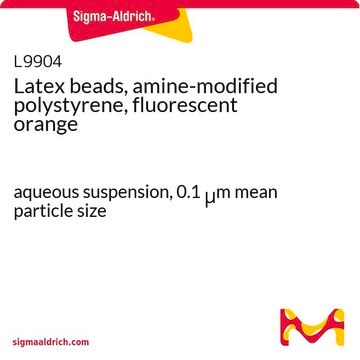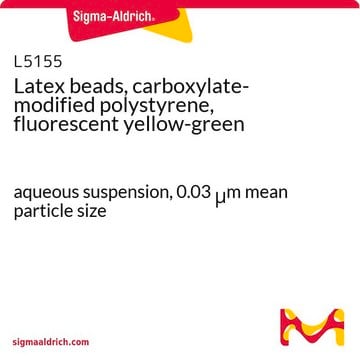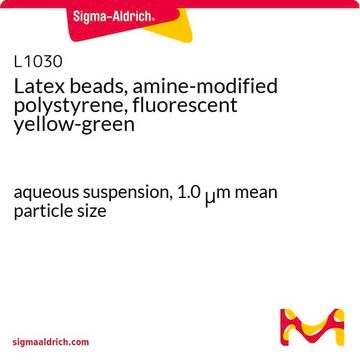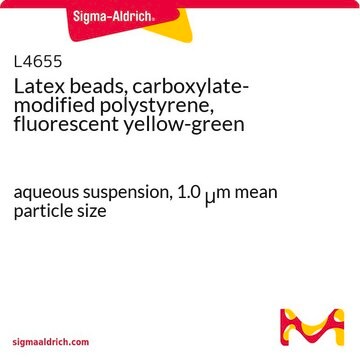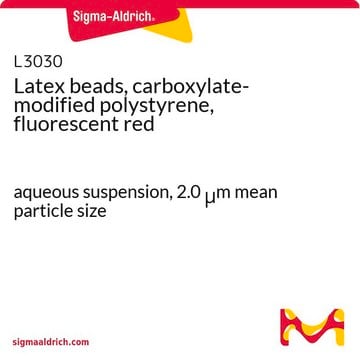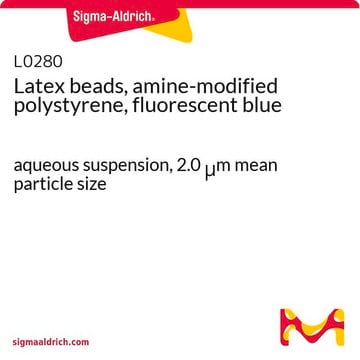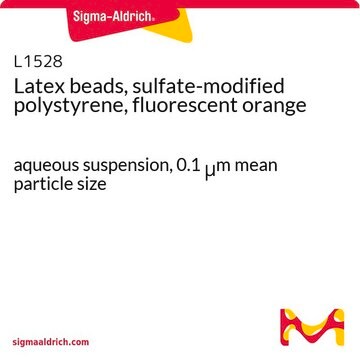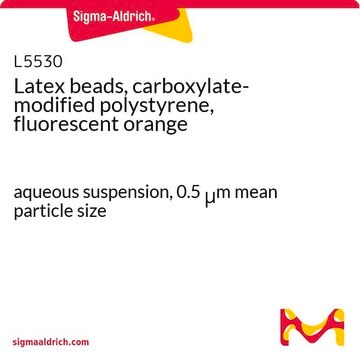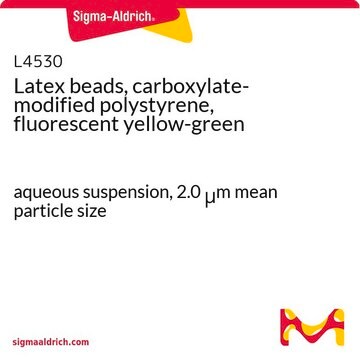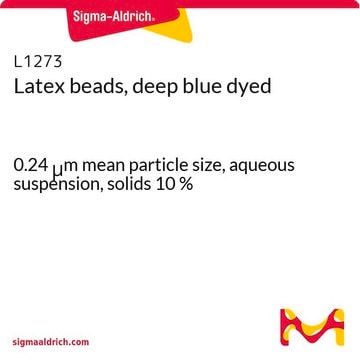The amine-modified polystyrene latex beads are suspended in distilled water with a minimum amount of proprietary cationic surfactant (0.2%). The concentration of solids (plastics) is >/= 2.5%.
L0780
Latex beads, amine-modified polystyrene, fluorescent blue
aqueous suspension, 0.05 μm mean particle size
Select a Size
MXP 1,732.00
Estimated to ship onApril 15, 2025
Select a Size
About This Item
MXP 1,732.00
Estimated to ship onApril 15, 2025
Recommended Products
form
aqueous suspension
Quality Level
composition
Solids, 2.5%
technique(s)
cell based assay: suitable
mean particle size
0.05 μm
fluorescence
λex ~360 nm; λem ~420 nm
application(s)
cell analysis
Looking for similar products? Visit Product Comparison Guide
Application
Biochem/physiol Actions
Storage Class Code
10 - Combustible liquids
WGK
WGK 3
Flash Point(F)
Not applicable
Flash Point(C)
Not applicable
Choose from one of the most recent versions:
Already Own This Product?
Find documentation for the products that you have recently purchased in the Document Library.
Customers Also Viewed
-
What will be the concentration of plastics in 1ml? Can I add distilled water to make stock solution?
1 answer-
Helpful?
-
Active Filters
Our team of scientists has experience in all areas of research including Life Science, Material Science, Chemical Synthesis, Chromatography, Analytical and many others.
Contact Technical Service
